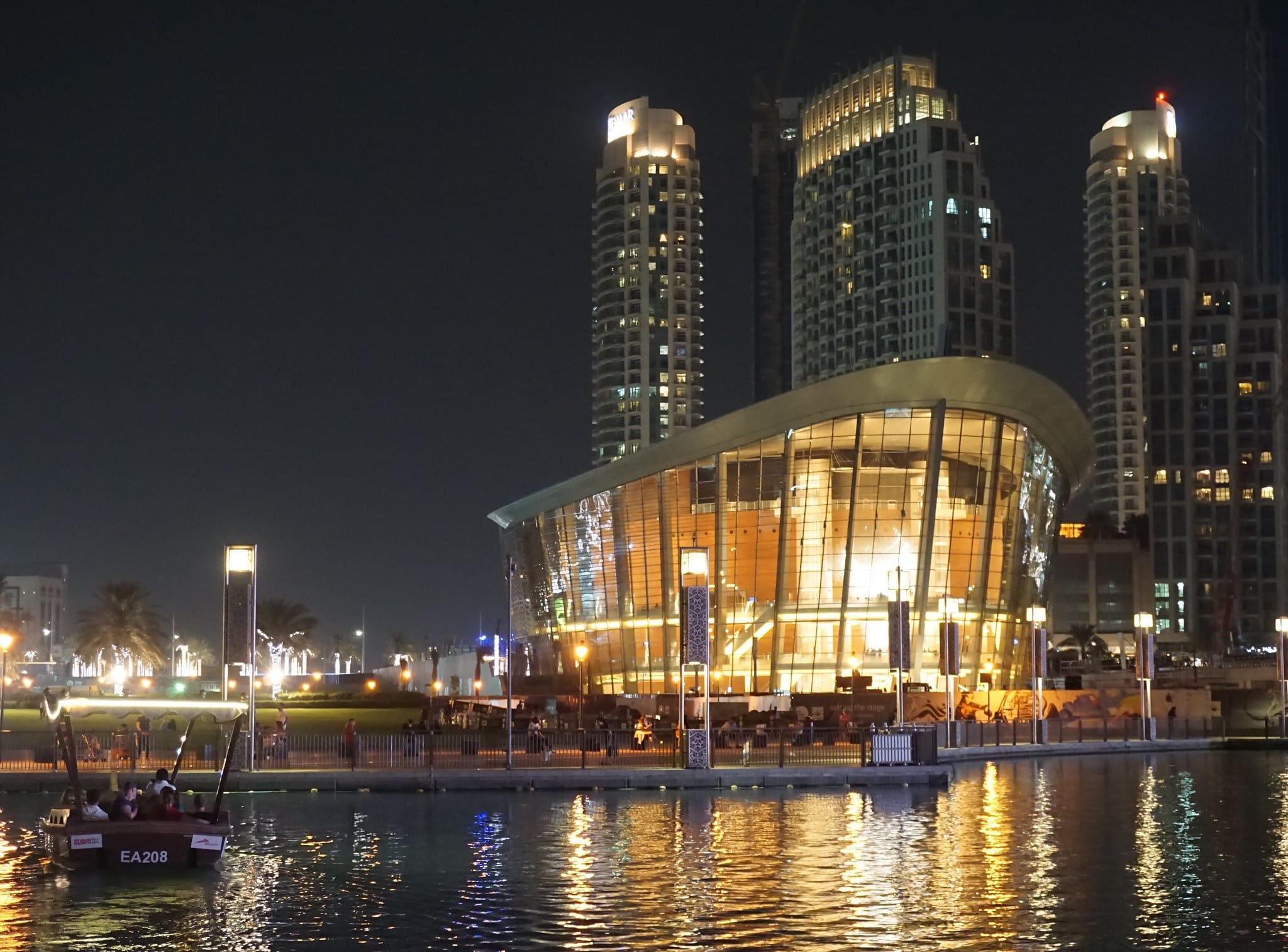Architecture in Dubai is characterized by dazzling skyscrapers of a very particular shape.
However, this was not always the case.
In this article, I'd like to introduce you to some of the city's must-see buildings.
Architecture in Dubai: article summary
Architecture in Dubai: Cayan Tower
The Cayan Tower presents an impressive twist as you look upwards. Its shape is not only designed to offer tourists a unique spectacle.
At 306 metres high, Cayan Tower's helical shape stands out from other skyscrapers along Dubai's waterfront. The building's 73 floors were designed using exactly the same plan. However, each is positioned 1.2 degrees clockwise to that below. You can see the Cayan Tower twist to its full height.
As well as being visually striking, this helix design helps shield interior spaces from direct sunlight while reducing the structural impact of strong winds.
The architectural firm behind the tower also designed the Burj Khalifa.
Jumeirah Mosque
There's more to Dubai's architecture than futuristic skyscrapers. Visit Jumeirah mosque is an excellent example of building inspired by a distant past.
Designed in the Fatimid architectural tradition, often associated with medieval Islamic Egypt, the mosque's white stonework produces a stunning visual effect at sunset.
Key design features include a pair of soaring minarets framing an impressive central dome.
The Jumeirah Mosque can accommodate around 1,200 worshippers and is one of the few mosques in the United Arab Emirates that allows non-Muslims to visit. The Jumeirah Mosque plays such an important role in Dubai's cultural identity. as it appears on the 500 dirham bill.
Jumeirah Emirates Towers
Jumeirah Emirates Tower One, the tallest of the rate pair, rising to almost 355 metres. The 54-storey building houses offices. Tower Two, meanwhile, rises to 309 meters and serves largely as a luxury hotel with 400 rooms.
Both are topped with distinctive equilateral triangles and an arrow. And both are clad in silver aluminum panels, with reflective glass in silver and copper, creating interesting lighting effects on the building façades.
Designed by architect Hazel Wong, the Jumeirah Emirates Towers were the tallest skyscrapers designed by a woman when they were completed in 2000.
Dubai Opera House
If you think opera houses are still brimming with the ornamental flourishes of 19thᵉ century Europe, then you need to visit the Dubai Opera House.
The exterior is a pleasant blend of historical and modern influences. The building is shaped like a wooden dhow, a tribute to Dubai's maritime past, but contemporary glass walls allow visitors to see the brilliant lighting from the interior promenade.
Architectural firm Atkins designed the building to divide easily into three spaces:
- a theater
- a concert hall
- flat-floor space for exhibitions and galas.
It can accommodate up to 2,000 people.
Since opening in 2016, the Dubai Opera House has hosted performances ranging from "Phantom of the Opera" to "Othello" and even a screening of "Harry Potter and the Philosopher's Stone" accompanied by live music from the Czech National Symphony Orchestra.
The Burj Al-Arab
Were Dubai and Atkins satisfied after completing the Jumeirah Beach Hotel? Probably not.
Indeed, a few years later, the magnificent Burj Al Arab opened its doors. With its sail-like shape, the 321-metre-high Burj Al Arab quickly became one of Dubai's most recognizable buildings.
A fiberglass screen protects the 18-storey atrium from the Dubai sun. The material has been coated with Teflon to prevent dust and sand from sticking to it. The building's rooftop features a helipad, which guests can use to climb to the top of the building. can use to enter or exit the building.
Atlantis, The Palm
Dubai further consolidated its position as a leading hotel destination with Atlantis, The Palm.
At first glance, the place looks a lot like the Atlantis resort in the Bahamas, but closer inspection reveals the building's Arab influences.
The coral-pink building, designed by WATG, combines the Arabian desert with the oceanic allure of mythical Atlantis. If you've got the money, you can even book one of the hotel's two underwater suites.
The resort is set on a collection of artificial islands known as Palm Islands, named after their palm tree-inspired shape.
Burj Khalifa
This list would not be complete without the tallest building in Dubai, the Middle East and the world.
When it opened in 2010, the Burj Khalifa has propelled Dubai to new heights.
At 828 meters high, the skyscraper also features the world's highest observation platform and the world's longest elevator ride.
And if that's not impressive enough, a series of vertical polished stainless steel fins have been added to accentuate Burj Khalifa's height and slenderness and incorporate Islamic design influences, according to CTBUH.
The building benefits from natural air conditioning. The cooler air at the top of the tower is sucked in before being sent back throughout the building.
Dubai's architecture is impressive. During your trip, you'll find yourself quickly impressed by the imposing buildings you'll find in the city.
What to do in Dubai in 1 day, 2 days, 3 days, 5 days, a week?
Whatever the length of your stay, I invite you to download my special Dubai guide.
It's free and in PDF format.
All you have to do is tell me below which e-mail address you'd like to receive it at.
EDIT: you can't enter your email?
Take the quiz at the top of this article and you'll be able to register your email address to receive the special Dubai guide!

Leave a Reply